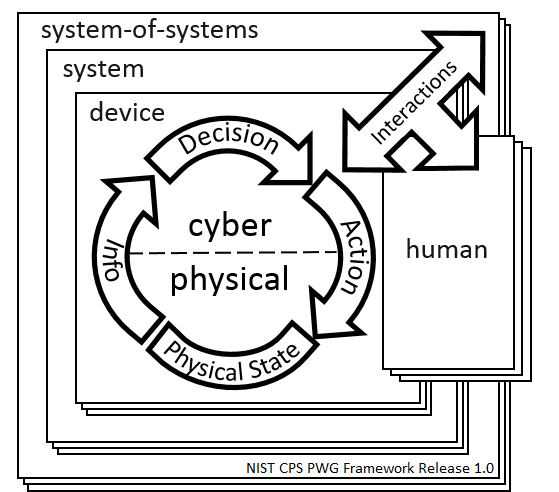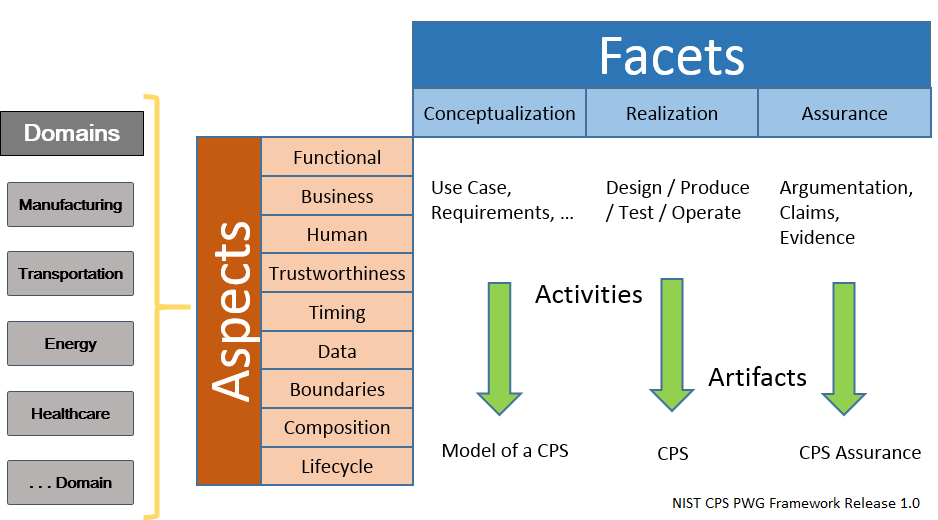CPS PWG Cyber-Physical Systems (CPS) Framework Release 1.0
 |
 |
| CPS Conceptual Model | CPS Framework – Domains, Facets, Aspects |
|
The CPS Public Working Group has completed the CPS Framework Release 1.0 The CPS Framework is freely available for download here. Note 20170513: NIST is convening a short term (summer 2017) collaboration to produce a white paper on communications requirements for federated testbeds. See here for more information. If you are interested contact Dr. Martin Burns (martin dot burns at nist dot gov) for more information. |
|
What is this Collaboration?
The impacts of CPS will be revolutionary and pervasive – this is evident today in emerging smart cars, intelligent buildings, robots, unmanned vehicles, and medical devices. Realizing the future promise of CPS will require interoperability between elements and systems, supported by new reference architectures and common definitions and lexicons. Addressing the problems and opportunities of CPS requires broad collaboration to develop a consensus around these concepts, and a shared understanding of the essential roles of timing and cybersecurity. To this end, NIST has established the CPS Public Working Group (CPS PWG), which is open to all, to foster and capture inputs from those involved in CPS, both nationally and globally.
-
About Us
Learn about this collaboration -
Working Groups
Vocabulary and Reference Architecture, Cybersecurity and Privacy, Timing, Data Interoperability, Use Cases -
Resources
Videos, presentations, and documents



